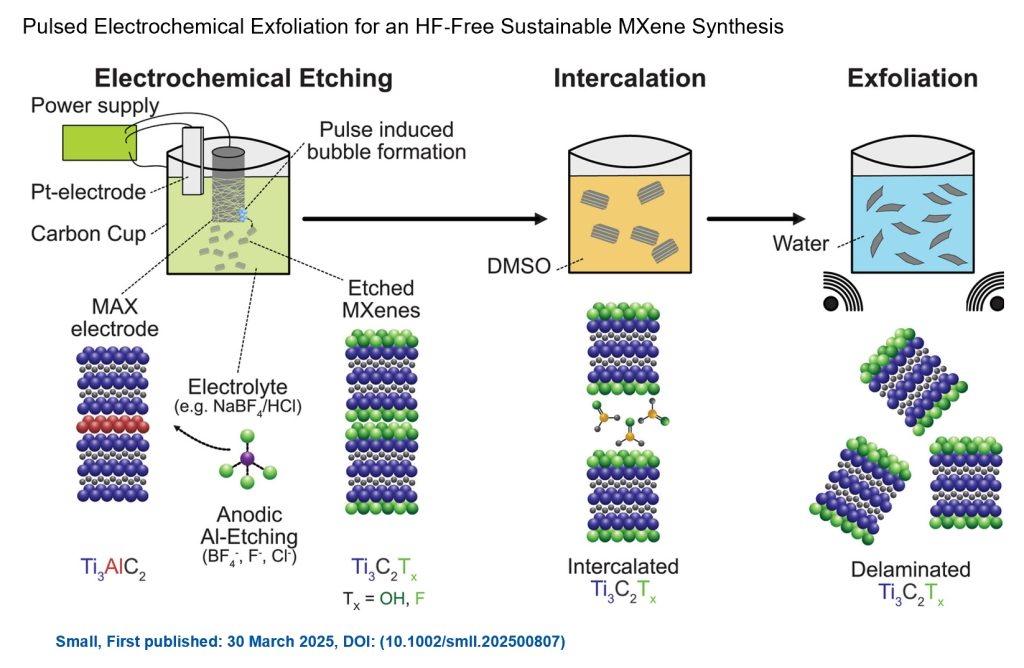Markus Ostermann1, Marko Piljevi´c1,2, Elahe Akbari 3, Prathamesh Patil 1, Veronika Zahorodna 4, Ivan Baginskiy 4, Oleksiy Gogotsi 4, Carsten Gachot 5, Manel Rodríguez Ripoll 2, Markus Valtiner 1,3 and Pierluigi Bilotto1,5
MXenes are a category of two-dimensional materials (2DM) that hold great promise for industrial applications due to their remarkable properties and varied compositions. However, achieving high etching efficiency in the synthesis process without resorting to toxic, hazardous, or unsustainable chemicals is a significant challenge. This research presents a scalable electrochemical technique for synthesizing MXenes. The novel method employs a non-toxic and sustainable sodium tetrafluoroborate/hydrochloric acid (NaBF4/HCl) electrolyte and improves etching efficiency through cathodic pulsing using pulse voltammetry. The generation of hydrogen bubbles aids in restoring electrochemical activity and effectively facilitates the removal of 2D sheets, allowing for continuous etching with higher yields in situ. Notably, yields of up to 60% electrochemical MXene (EC-MXene) are achieved from a single exfoliation cycle without producing any byproducts.
The quality of EC-MXene is outstanding, with high purity verified through chemical mapping via scanning electron microscopy with energy dispersive electron spectroscopy (SEM/EDX) and surface termination analysis performed using X-ray photoelectron spectroscopy (XPS) and, for the first time, low energy ion scattering (LEIS). Additional characteristics of EC-MXenes, including the dimensions and adhesion energy of individual flakes, vibrational peaks, and interlayer spacing, are examined using atomic force microscopy (AFM), X-ray diffraction (XRD), Raman spectroscopy, and transmission electron microscopy (TEM), respectively. The pulsed electrochemical synthesis plays a vital role in reactivating the surface at the electrode interface, resulting in improved exfoliation and quality of EC-MXenes. This progress paves the way for the scaling up and sustainable industrialization of MXenes.
